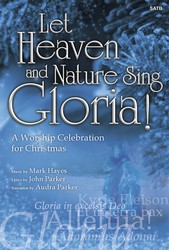- |
User Links
Good Christian Friends, Rejoice

Good Christian friends, rejoice
Translator: J. M. Neale (1853)Tune: IN DULCI JUBILO
Published in 225 hymnals
Printable scores: PDF, MusicXMLPlayable presentation: Lyrics only, lyrics + musicAudio files: MIDI, Recording
Representative Text
1 Good Christian friends, rejoice
with heart and soul and voice;
give ye heed to what we say:
Jesus Christ was born today.
Ox and ass before him bow,
and he is in the manger now.
Christ is born today!
Christ is born today!
2 Good Christian friends, rejoice
with heart and soul and voice;
now ye hear of endless bliss:
Jesus Christ was born for this!
He has opened heaven's door,
and we are blest forevermore.
Christ was born for this!
Christ was born for this!
3 Good Christian friends, rejoice
with heart and soul and voice;
now ye need not fear the grave:
Jesus Christ was born to save!
Calls you one and calls you all
to gain his everlasting hall.
Christ was born to save!
Christ was born to save!
Psalter Hymnal, (Gray)
Translator: J. M. Neale
 John M. Neale's life is a study in contrasts: born into an evangelical home, he had sympathies toward Rome; in perpetual ill health, he was incredibly productive; of scholarly temperament, he devoted much time to improving social conditions in his area; often ignored or despised by his contemporaries, he is lauded today for his contributions to the church and hymnody. Neale's gifts came to expression early–he won the Seatonian prize for religious poetry eleven times while a student at Trinity College, Cambridge, England. He was ordained in the Church of England in 1842, but ill health and his strong support of the Oxford Movement kept him from ordinary parish ministry. So Neale spent the years between 1846 and 1866 as a warden of Sackvi… Go to person page >
John M. Neale's life is a study in contrasts: born into an evangelical home, he had sympathies toward Rome; in perpetual ill health, he was incredibly productive; of scholarly temperament, he devoted much time to improving social conditions in his area; often ignored or despised by his contemporaries, he is lauded today for his contributions to the church and hymnody. Neale's gifts came to expression early–he won the Seatonian prize for religious poetry eleven times while a student at Trinity College, Cambridge, England. He was ordained in the Church of England in 1842, but ill health and his strong support of the Oxford Movement kept him from ordinary parish ministry. So Neale spent the years between 1846 and 1866 as a warden of Sackvi… Go to person page >Text Information
Related Texts
| First Line: | Good Christian friends, rejoice |
| Title: | Good Christian Friends, Rejoice |
| Latin Title: | In dulci jubilo |
| Translator: | J. M. Neale (1853) |
| Meter: | 6.6.7.7.7.8.5.5 |
| Source: | German/Latin, medieval; Latin Hymn, 14th cent. |
| Language: | English |
| Notes: | Swahili translation: See "Wakristo wenzetu furahini nyoto mkiimba" by M. G. Mutsoli |
| Copyright: | Public Domain |
- Year A, Christmas season, Christmas Eve
This is recommended for Year A, Christmas season, Christmas Eve by 2 hymnal lectionary indexes including Glory to God: the Presbyterian Hymnal #132 and Lift Up Your Hearts: psalms, hymns, and spiritual songs #98. - Year A, Christmas season, Christmas Day
This is recommended for Year A, Christmas season, Christmas Day by 2 hymnal lectionary indexes including Glory to God: the Presbyterian Hymnal #132 and Lift Up Your Hearts: psalms, hymns, and spiritual songs #98. - Year A, Christmas season, First Sunday after Christmas Day
This is recommended for Year A, Christmas season, First Sunday after Christmas Day by 2 hymnal lectionary indexes including Lift Up Your Hearts: psalms, hymns, and spiritual songs #98. - Year B, Christmas season, Christmas Eve
This is recommended for Year B, Christmas season, Christmas Eve by 2 hymnal lectionary indexes including Glory to God: the Presbyterian Hymnal #132 and Lift Up Your Hearts: psalms, hymns, and spiritual songs #98. - Year B, Christmas season, Christmas Day
This is recommended for Year B, Christmas season, Christmas Day by 2 hymnal lectionary indexes including Glory to God: the Presbyterian Hymnal #132 and Lift Up Your Hearts: psalms, hymns, and spiritual songs #98. - Year C, Christmas season, Christmas Eve
- Year C, Christmas season, Christmas Day
This is recommended for Year C, Christmas season, Christmas Day by 2 hymnal lectionary indexes including Glory to God: the Presbyterian Hymnal #132 and Lift Up Your Hearts: psalms, hymns, and spiritual songs #98. - Year C, Christmas Season, Second Sunday after Christmas Day
This is recommended for Year C, Christmas Season, Second Sunday after Christmas Day by 2 hymnal lectionary indexes including Glory to God: the Presbyterian Hymnal #132. - Year C, Easter season, Easter Evening
English
- A Hymnal and Service Book for Sunday Schools, Day Schools, Guilds, Brotherhoods, etc. #533
- A Hymnal for Friends #163
- A New Hymnal for Colleges and Schools #228
- A New Service and Tune Book for Sunday Schools. New ed. #d36
- A Treasury of Hymns: The best-loved hymns, carols, anthems, children's hymns, and gospel songs #102
- Ambassador Hymnal: for Lutheran worship #34
- Ancient and Modern: hymns and songs for refreshing worship #65
- Anglican Hymns Old and New (Rev. and Enl.) #265
- Armed Forces Hymnal. Catholic Supplement #d34
- At Worship: a hymnal for young churchmen #129 10 shown out of 163
Englsih
Korean
Latin
Notes
Scripture References:
st. 1 = Luke 2:11
Expressing the good news of the birth of Christ, who is born to save, this medieval carol calls all Christians to "rejoice with heart and soul and voice!" The earliest manuscript of the text dates from around 1400 (Leipzig), though the carol wasn't published until 1533 in Joseph Klug's Geistliche Lieder (PHH 126). Mention of the carol, however, was made by a fourteenth century writer who claimed that angels sang this hymn while dancing with the mystic Heinrich Suso (d. 1366). The carol is part of the late medieval tradition of teaching Bible stories to peasants by means of folk music. The original bilingual text combined Latin and German.
John M. Neale (PHH 342) provided a rather free English paraphrase that was published in his Carols for Christmastide (1853). The English text originally began "Good Christian men, rejoice" and also included additional words because Neale's associate, Thomas Helmore (PHH 328), made an error in transcribing the rhythm of the tune.
Liturgical Use:
Christmas Day or Christmas Eve worship services, especially early in the service; festivals of lessons and carols; "carols from many lands" services; church school programs.
--Psalter Hymnal Handbook, 1988
Tune
IN DULCI JUBILOIN DULCI JUBILO was originally a folk dance; it is filled with rhythmic energy. There are many organ and choral arrangements of this tune. Sing this lilting lively carol in unison or in parts with bright flute accompaniment (either real flutes or flute stops on the organ). Observe a ritardando only…
For Leaders
The story of this hymn has always been about accessibility to the Christmas story. In the late medieval period, there was a tradition of using folk songs to teach illiterate church-goers the Gospel story. This hymn is a good example of that practice. Written in a combination of Latin and German, it would be familiar in both the vernacular and the language of the Church. When set to a familiar folk tune, the people would be able to sing along with ease, and would understand the story.
Over the centuries, this hymn has been translated into many different languages, so many more people could hear and sing these beautiful words that call us to praise. A missionary diary claims that on September 14, 1745, at the Moravian mission in Bethlehem, Pennsylvania, this hymn was simultaneously sung in thirteen different languages. What a marvelous thought, that we can sing the same song with brothers and sisters in Christ around the world, celebrating the story that began all of our own stories.
Text:
The original text of this hymn was written in both German and Latin, probably in the fourteenth century, since the earliest manuscript dates from around 1400. John M. Neale translated the hymn and paraphrased it rather loosely, but his translation is the most commonly used today. Most modern hymnals include almost the same text, with a few small exceptions. Some hymnals, such as the Trinity Hymnal, have replaced “ox and ass” with “Earth and heav’n,” others, like Common Praise, have replaced “ye” with “you,” and others, such as the Psalter Hymnal, have replaced the non-inclusive “men” with “friends” or “all.”
Tune:
IN DULCI JUBILO was an old German folk dance filled with rhythmic energy and exuberance. Paul Westermeyer notes, “The catchy melody bounces along in a triple rhythm that is easily sung and danced” (Let the People Sing, 39), and Albert Bailey acknowledges that “the continued popularity of the carol is undoubtedly due in part to the swinging fourteenth-century German melody to which it is set” (The Gospel in Hymns, 276).
This sprightly tune needs little in the way of accompaniment; else it could become bogged down. Try playing with light picking on the acoustic guitar, and if you can, have a pipe or flute, or a violin play the melody in a medieval/celtic style. If you have an organ, use flute stops or a very light registration, and sing one verse a cappella.
When/Why/How:
This Christmas hymn acts as a wonderful Call to Worship on Christmas morning, calling God’s people to enter into worship rejoicing, for Christ the Savior is born.
Alternative Harmonization for Organ:
- Burkhardt, Michael. Easy Hymn Settings - Christmas
Alternative Harmonization for Piano:
- Hopson, Hal H. The Creative Use of the Piano in Worship
- Carter, John. More Carols for Piano
Choral:
- Holstein, Jane. Good Christian Friends, Rejoice
- 12 Carols for about 12 Singers (Easy-to-prepare Christmas Anthems for SAB Choirs)
- Culloton, Matthew. In dulci jubilo, Latin and English text to the tune IN DULCI JUBILO
- Proulx, Richard. Good Christian Friends, Rejoice, Organ and Trumpet accompaniment
Other music:
- Seven Christmas Fantasies for Piano with Violin
- Come and Rejoice! Seasonal Music for Trumpet and Organ
- Raney, Joel. Christmas Fantasy for Organ & Brass
Laura de Jong, Hymnary.org
Timeline
Arrangements
Media
Psalter Hymnal (Gray) #355
- MIDI file from Baptist Hymnal 1991 #96
- MIDI file from Baptist Hymnal 1991 #96
- Audio recording from Baptist Hymnal 2008 #183
- MIDI file from The Cyber Hymnal #1966
- Audio recording from Evangelical Lutheran Worship #288
- Audio recording from Glory to God: the Presbyterian Hymnal #132
- Audio recording from Lift Up Your Hearts: psalms, hymns, and spiritual songs #98
- Audio recording from Lift Up Your Hearts: psalms, hymns, and spiritual songs #98
- Audio recording from Psalter Hymnal (Gray) #355
- MIDI file from Psalter Hymnal (Gray) #355
- MIDI file from Psalter Hymnal (Gray) #355
- Audio recording from Trinity Hymnal (Rev. ed.) #207
- Audio recording from The Worshiping Church #157
- Audio recording from The United Methodist Hymnal #224
- MIDI file from Worship and Rejoice #198
- Audio recording from Worship (4th ed.) #427


 My Starred Hymns
My Starred Hymns







